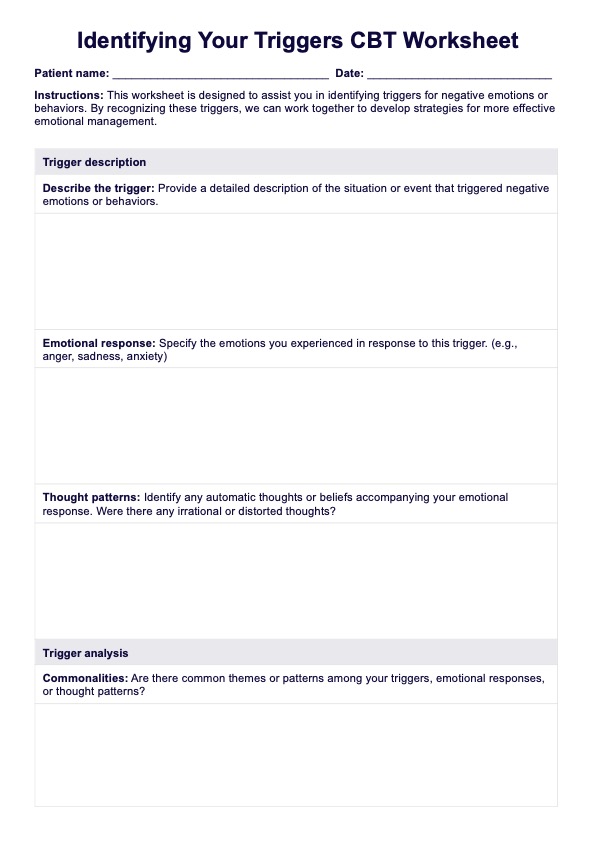The time required varies from person to person. Completing the worksheet typically takes 15 to 30 minutes, but it may take longer if individuals explore their triggers more deeply.

Identifying Your Triggers CBT Worksheet
Enhance self-awareness and emotional regulation with the Identifying Your Triggers CBT Worksheet—a valuable tool for personal growth and therapy.
Use Template
Identifying Your Triggers CBT Worksheet Template
Commonly asked questions
This worksheet helps individuals identify and understand their emotional triggers and thought patterns, fostering self-awareness and enabling them to develop healthier coping strategies.
It is best used when individuals want to gain insight into their emotional reactions and thought patterns. It's valuable during therapy, self-reflection, anger management, addiction recovery, and conflict resolution.
EHR and practice management software
Get started for free
*No credit card required
Free
$0/usd
Unlimited clients
Telehealth
1GB of storage
Client portal text
Automated billing and online payments











